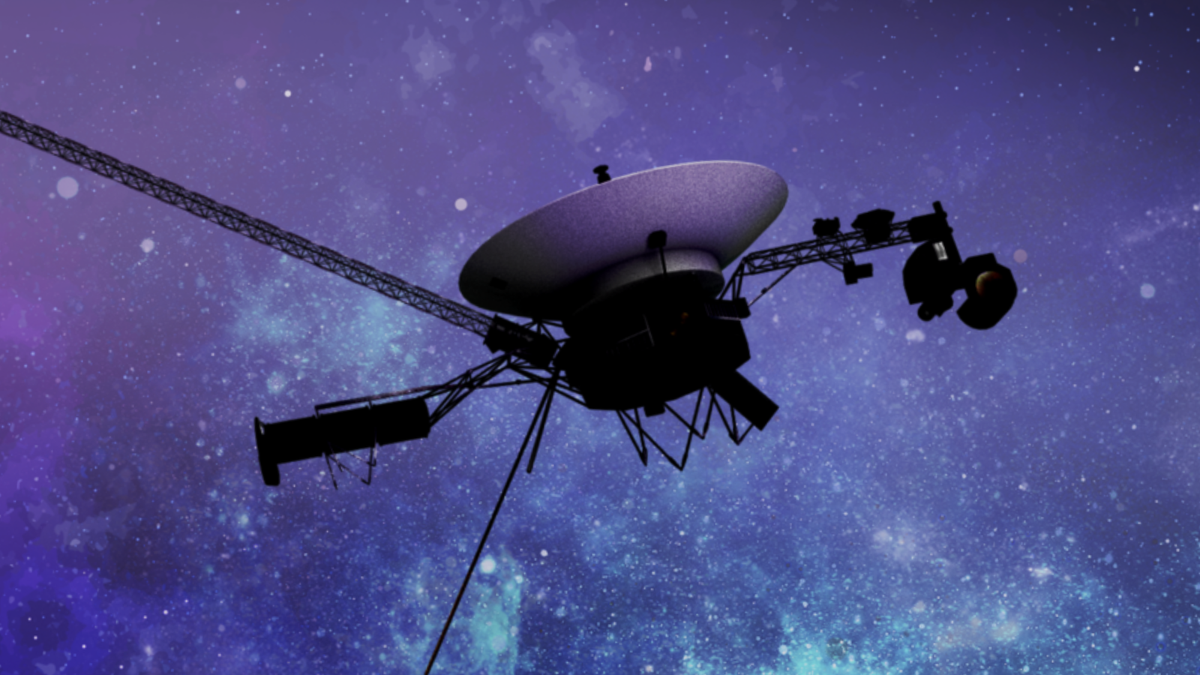NASA engineers are one step closer to solving a communication problem that left the Voyager 1 spacecraft, currently located outside the solar system, unable to send usable data to Earth.
In 2012, Voyager 1 became the first man-made object to leave the solar system and enter interstellar space. For 11 years after this achievement, the spacecraft sent data to Earth Control. This was data detailing how space operates outside the influence of the Sun. However, in November 2023, Voyager 1's communications with ground operators became inconsequential.
However, to be clear, Voyager 2, which followed its space sister out of the solar system in 2018, is still operational and communicating with Earth.
“In fact, communication between the spacecraft and Earth was still connected, but Voyager's voice had been replaced by a monotonous dial tone,” the Voyager 1 engineering team previously told Space.com.
The source of the problem appears to be one of the three computers on board Voyager 1: the Flight Data Subsystem (FDS). this computer, NASA saysis responsible for filling out scientific and engineering data before sending it to Earth by the spacecraft's telemetry modulation unit.
Related: A glitch in NASA's Voyager 1 spacecraft has scientists sad but optimistic: “Voyager 2 is still going strong.”
A positive step toward resolving communication issues between ground control and Voyager 1 came on March 3 when the Voyager mission team detected activity from one section of the FDS that was different from the rest of the computer's noisy data stream.
Voyager 1's messages come to Earth in the form of 1's and 0's, a computer language called binary code, but since the end of last year, this code no longer has any meaning. Even the newly discovered signal still wasn't in the correct format that Voyager 1 should use when FDS is operating as designed, meaning the operating team wasn't initially quite sure what to do with it.
However, that changed when an engineer at NASA's Deep Space Network, tasked with operating the radio antennas that communicate with Voyager 1 and its sister Voyager 2, as well as other NASA spacecraft closer to home, took a look at the code. The unnamed engineer was able to decode the external signal, and discovered that it contained a read of the entire FDS memory.
The encoded FDS memory contains performance instructions and code values that can change either if the spacecraft's condition changes or if it is commanded to do so. Scientific and engineering data that will be transmitted to Earth is also stored in memory.
The team will now compare this new signal, which was caused by a prompt or “poke” from mission control, with data sent back to Earth before Voyager 1 began emitting binary nonsense. Finding discrepancies between normal Voyager 1 data and this triggered signal will help the crew search for the source of the problem. The idea of the poke was to ask FDS to try using different sequences in its software package and determine if the connection issue could be resolved by navigating around a damaged or corrupted partition.
Voyager 1 is currently located about 15 billion miles (24 billion kilometers) from Earth, which means resolving communication issues can be an arduous process. It takes 22.5 hours to receive a radio signal from Voyager 1, and then another 22.5 hours to receive a response via the Deep Space Network antennas.
This means that the results of NASA's poke were received on March 3, and on March 7 engineers began working on decoding this signal. Three days later they determined that the signal contained FDS memory readings.
NASA scientists and engineers will continue to analyze this reading to restore contact with the pioneering space mission that extended humanity's reach far beyond the solar system.

“Extreme travel lover. Bacon fanatic. Troublemaker. Introvert. Passionate music fanatic.”







More Stories
A fossilized creature may explain a puzzling drawing on a rock wall.
MrBeast Sued Over ‘Unsafe Environment’ on Upcoming Amazon Reality Show | US TV
Watch comets Lemmon and SWAN approach Earth today